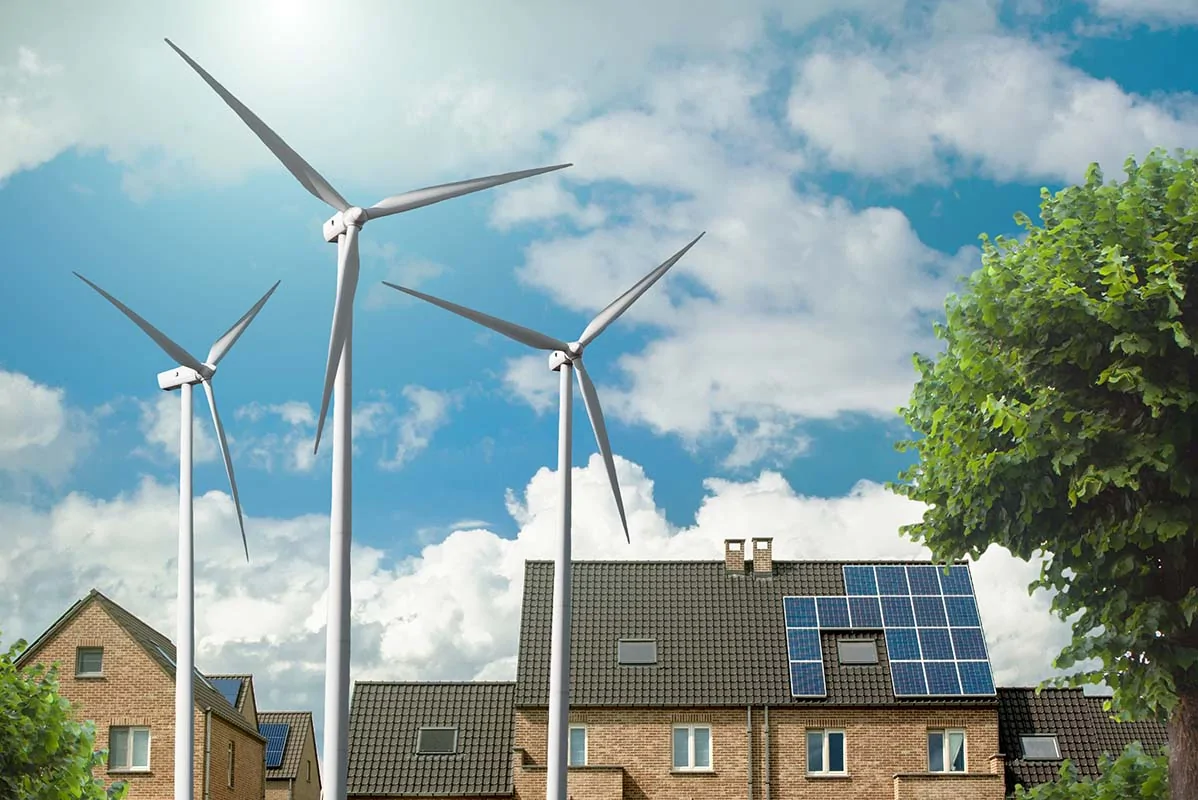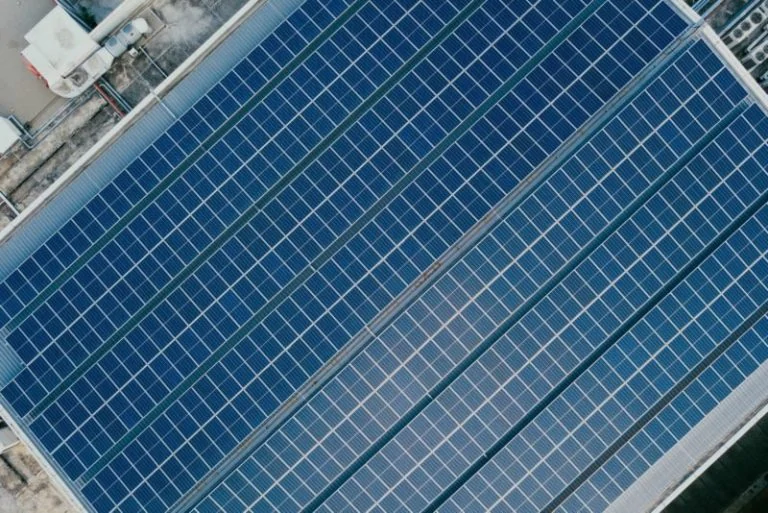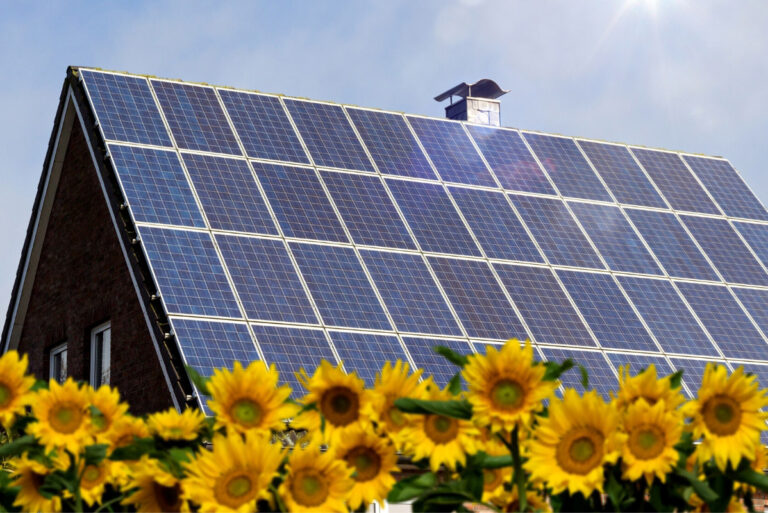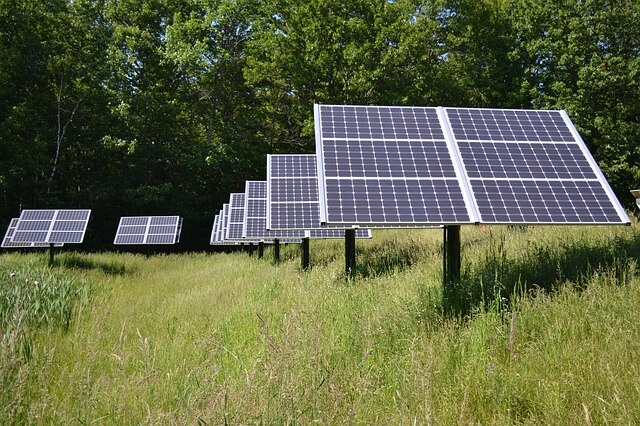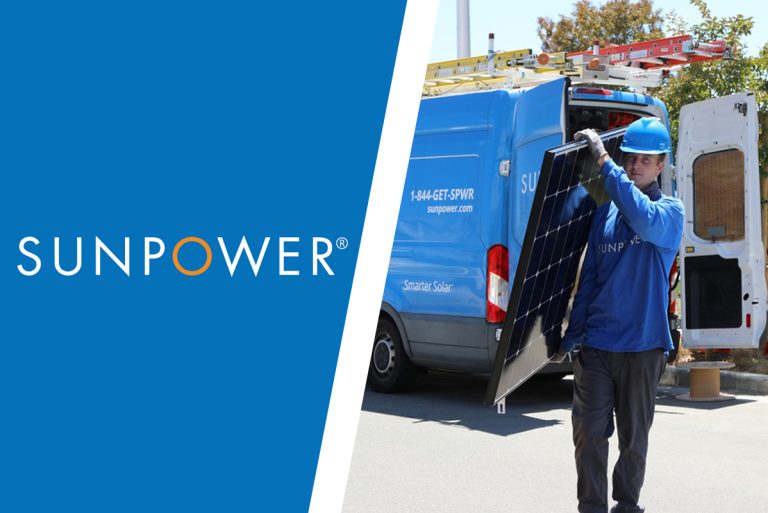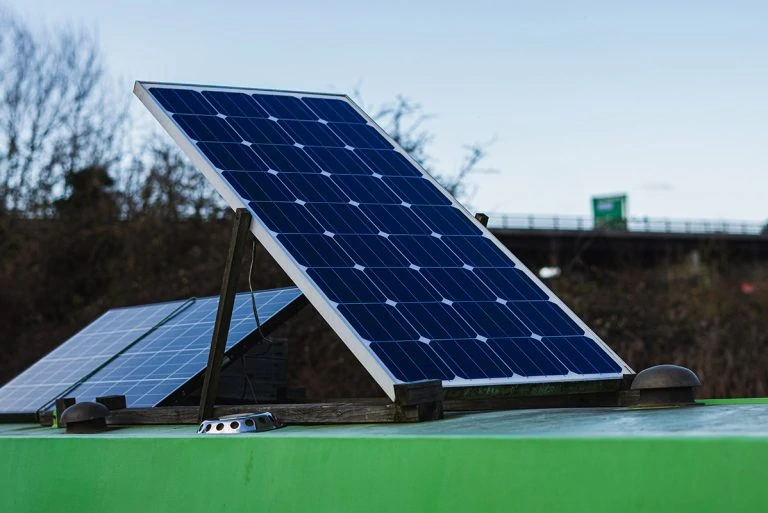Are you a concerned homeowner wondering which is the better choice to meet your home energy needs: Solar vs. wind power? Because the move to renewable energy can be a weighty financial investment, you definitely need to do your research and analyze all your alternatives first.
There are many questions to answer before you decide on a clean energy choice that’s right for you. Here you’ll find the latest information on:
- Types of solar and wind energy systems available for home use
- Comparative costs for solar and wind residential energy setups
- Electrical power output for solar arrays vs. wind turbines
- Government incentives like tax rebates or credits for renewable energy purchases by homeowners
- End-of-life recycling of spent solar panels or wind turbines
For property owners, the good news is that solar and wind power costs have plummeted in the past several years. An added bonus is that their efficiencies in converting carbon-free solar or wind energy to usable electricity for your home are getting higher all the time. So, what are you waiting for? It’s time to jump on the green energy wave.
What are the key differences between solar and wind energy?
While it’s true that both solar and wind power are renewable, do not create toxic emissions during operation, or contribute to climate change like fossil fuel burning, there are a few significant differences between them.
Here’s a short video by Constellation Energy that summarizes many of the key differences between solar vs. wind energy.
To easily compare them, consider the following table based on the video:
| Solar | Wind |
|---|---|
| Sunlight particles (photons) in solar energy activate electrons in photovoltaic (PV) cells creating electricity; Efficiency = 15-23%; Latest tech = 40% | About 2% of the sun’s energy hitting Earth is converted to wind. Wind’s kinetic energy converted by turbines to mechanical power that spins a generator, creating electricity; Theoretical Efficiency = 59%; Actual = 50% |
| Solar panels produce direct current (DC) electricity subsequently inverted to AC for home use. | Wind turbines produce alternating current (AC) electricity. |
| More common on a smaller scale, like a home’s roof. | Wind farms, both on- and offshore, are more common on a public-utility scale, but can work on some private residences, too. |
| Few or no moving parts (depending on the system); quiet. | Many moving parts (blades, rotor, gears, generator); noisy. |
| Usually cheaper for home use than wind energy, especially with tax credits. | Expensive to power a home when onsite; community wind programs will offset costs. |
| Fewer local restrictions on PV installations than on wind turbines. | More space needed for wind turbines, more restrictions apply regarding placement near residential or business zones. |
| Great for both rural and urban areas. | Works much better in rural locations where wind is prevalent. |
5 Things to consider when deciding between solar and wind
Consider the following 5 important factors will help you decide whether solar or wind is better suited for a certain need.
1. What is a residential solar energy vs. wind energy system?
Homeowners have many options for solar and wind energy systems. Solar arrays are usually placed on homes’ roofs or, less frequently, mounted on the ground. Wind turbines are often placed in isolated fields or large yards, while smaller micro-turbines may be positioned on top of buildings.
In the solar world, there are now panels with two-sided photovoltaic cells (bifacials). Solar shingles and setups that track the sun during the day are also on the market.
The large majority of solar panels are made of mono- or polycrystalline silicon. The hardware used to mount the arrays is usually metal.
Wind turbines often have 2 or 3 blades made of fiberglass or plastic. The most popular style is one that rotates on a horizontal axis, although vertical-axis models that resemble an “S” or an eggbeater are available. The turbines are located on towers, usually made of steel, which may be free-standing or guyed. A guyed tower is held stationary by numerous guy wires.
2. How much does a home solar vs. wind energy system cost?
While there is no precise answer to this question because of all the variables involved, especially the size of your home energy system, solar systems cost approximately $18,000 (before tax credits) for a 6 kW system. An installation of this size meets the energy needs of an “average” home (approximately 1,500 square feet). This value includes materials and labor as well as any necessary permits.
Solar requires very little maintenance, although annual cleaning is recommended to control dust and dirt buildup, which will decrease the energy efficiency of your photovoltaic cells.
On the other hand, wind turbines cost more, averaging $60,000 for a 6 kW system, according to a 2017 report from the U.S. Department of Energy. Due to their moving parts, regular maintenance is needed to keep the turbines working efficiently in generating electricity.
However, DIYers can create their own renewable energy structures for a lot less. You may wish to heat a pool or run a sailboat or RV with a small solar array or wind microturbine.
3. How large of a solar vs. wind energy system do you need?
The answer of the optimal size for a renewable energy installation at your home depends on your unique situation. Fortunately, there are several online guides and tools available to help you determine your home’s energy usage. This value is the baseline number needed to determine the size of a clean energy project that’s right for your home.
The second part of the equation is to assess how much solar or wind potential your location has. For example, if you live in an area that gets little sun or practically no wind, you need to adjust accordingly.
There are many mapping services that reveal your home’s solar energy potential. For your wind potential, start with this guide.
4. Are there any government tax breaks or other savings for installing a home solar vs. wind energy project?
Yes, local, state, and/or federal governments offer various programs that save you money on your home green energy project. Besides these, companies and utilities may offer further reductions for making a solar or wind energy investment.
For instance, until the end of 2020, the United States federal government is offering 26% off of the total cost of your home solar or wind project. The amount drops to 22% until the end of 2021. Some states may give a further rebate for clean energy home projects.
Besides these financial incentives to adopt home solar or wind, there are monthly savings on your electric bill (if you’re connected to the electric grid) that vary widely from place to place and which are dependent on the type of renewable energy system(s) you have.
These savings contribute to reducing the payback time (that is, the moment when your system begins to make money for you after paying for itself). Today for solar, the payback — also called a return on investment or ROI — is about 10 years (depending on your system). For wind, it is 10-15 years.
Utilities that need to demonstrate by law that they’re producing a certain quantity of renewable energy may elect to “buy” your home’s output. You then receive monthly dividends, called solar renewable energy certificates, on a solar or wind energy stock exchange. This money is a form of passive income that is taxable.
Lastly, some utilities offer net metering where they will buy back from you any “extra” energy you produce that you do not consume. If you have a battery backup, you can reserve all of the energy your system produces for times when the sun isn’t shining or the wind isn’t blowing.
5. Can solar panels or wind turbines be recycled after they are retired?
Recycling of used solar panels or wind turbines is a new industry that requires technologies still in their infancies. However, it is very possible to recycle most of their component materials.
Since the early 2000s when PV panels were first installed on homes, there really hasn’t been a need to recycle them given their typically 25-year warranty. The need will become more pronounced in the next decade or two and there’s every reason to believe that industry will meet the need. The same can be said about wind turbines.
Solar vs. Wind Energy at Home Wrap Up
Consumers who wish to reduce their carbon footprint by installing a solar and/or wind home energy system have several options. None is “better” than the others in all cases.
It may be possible to benefit from the best of what solar and wind have to offer by installing both. Participating in community solar or wind programs to complement your installed system is another alternative.
As the cost of renewable energy continues to fall, homeowners now have every reason to install solar and/or wind power to meet all of their home energy needs.

